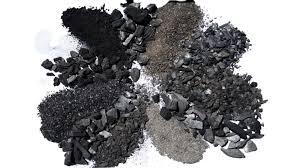Biochar Market growth fueled by technological advancements in pyrolysis and biomass conversion processes worldwide

Introduction
The Biochar Market has experienced significant growth due to innovations in pyrolysis and biomass conversion technologies. These technological advancements enhance production efficiency, improve product quality, reduce costs, and increase the sustainability of biochar applications. Pyrolysis and other biomass conversion processes transform agricultural residues, forestry by-products, and organic waste into high-quality biochar, contributing to soil improvement, carbon sequestration, and renewable energy solutions. This article explores the impact of technology on the biochar market, detailing recent innovations, benefits, regional adoption, challenges, and future opportunities for stakeholders worldwide.
Technological Advancements in Biochar Production
Pyrolysis Technology
Pyrolysis is the thermal decomposition of organic materials in the absence of oxygen, producing biochar, syngas, and bio-oil. Recent advancements include:
-
High-efficiency pyrolysis systems: These systems improve yield, reduce energy consumption, and ensure consistent biochar quality.
-
Continuous-feed pyrolysis units: Allow large-scale production, enhancing supply capacity for commercial agriculture and industrial applications.
-
Modular pyrolysis designs: Enable flexible deployment across regions, reducing transportation needs and production costs.
Biomass Conversion Innovations
Biomass conversion processes complement pyrolysis, utilizing agricultural and forestry residues to create value-added biochar products:
-
Gasification: Converts biomass into syngas and biochar, providing renewable energy while producing high-carbon content biochar.
-
Hydrothermal Carbonization (HTC): Uses water and heat to convert wet biomass into hydrochar, suitable for soil amendment in various climates.
-
Co-pyrolysis techniques: Combine multiple feedstocks to improve nutrient content, soil compatibility, and biochar stability.
Benefits of Technological Advancements
Improved Product Quality
Advanced pyrolysis and biomass conversion technologies produce biochar with uniform particle size, high porosity, and stable carbon content, ensuring consistent soil enrichment and carbon sequestration outcomes.
Enhanced Production Efficiency
Automation, digital monitoring, and process optimization reduce energy consumption, minimize waste, and increase overall yield, lowering production costs for manufacturers.
Environmental Sustainability
Innovations enable the use of diverse feedstocks, including agricultural residues and organic waste, reducing landfill dependency and greenhouse gas emissions.
Energy Recovery
By-products such as bio-oil and syngas can be harnessed for energy, supporting circular economy models and offsetting operational costs.
Regional Adoption of Advanced Biochar Technologies
North America
High investment in R&D and advanced farming practices drive the adoption of efficient pyrolysis units. Companies integrate biochar production into sustainable agriculture and renewable energy initiatives.
Europe
Technological innovation aligns with EU sustainability policies, carbon credit incentives, and organic farming regulations, fostering demand for high-quality biochar products.
Asia-Pacific
Rapid industrialization and expanding agricultural sectors encourage the use of modular pyrolysis and biomass conversion technologies, particularly in China, India, and Japan.
Emerging Economies
While adoption is slower due to capital constraints, pilot projects, NGO initiatives, and government support are introducing advanced biochar technologies in regions like Africa and Latin America.
Applications Enhanced by Technological Advancements
Sustainable Agriculture
Improved biochar enhances soil fertility, water retention, and nutrient efficiency, supporting organic farming and climate-resilient agriculture.
Carbon Sequestration
Stable, high-carbon biochar reduces CO2 emissions and participates in carbon credit programs, creating additional revenue streams.
Waste Management
Advanced biomass conversion technologies enable the utilization of agricultural and industrial residues, transforming waste into valuable products.
Renewable Energy
By-products from pyrolysis and gasification support bioenergy generation, integrating biochar production with energy sustainability strategies.
Challenges in Technology Adoption
High Capital Investment
Advanced pyrolysis and biomass conversion systems require significant upfront costs, which may deter small-scale producers.
Feedstock Availability
Consistent and diverse feedstock supply is essential to maintain efficient production and high-quality biochar.
Technical Expertise
Operating advanced systems requires skilled labor and technical knowledge, necessitating training and capacity-building initiatives.
Regulatory Compliance
Technologies must meet environmental and safety standards, which vary across regions, potentially impacting deployment timelines.
Strategies for Maximizing Growth
Investment in R&D
Continuous research and innovation improve efficiency, reduce costs, and develop customized biochar products for specific crops and soils.
Public-Private Partnerships
Collaborations between governments, NGOs, and private companies facilitate technology adoption, subsidize equipment costs, and promote sustainable practices.
Modular and Scalable Systems
Deploying small-scale, modular units allows flexible production, reduces transport costs, and caters to regional demand variations.
Integration with Digital Agriculture
Smart sensors, precision application systems, and data analytics optimize biochar usage, monitor soil health, and increase adoption among farmers.
Opportunities in the Global Market
Expansion into Emerging Markets
Regions with high agricultural potential can benefit from modular, low-cost pyrolysis technologies, expanding market reach and environmental impact.
Carbon Credit Monetization
High-quality biochar produced through advanced technology can participate in carbon credit schemes, enhancing revenue opportunities for producers.
Industrial Collaborations
Partnerships with fertilizer, energy, and waste management companies create integrated solutions and increase demand for technologically advanced biochar.
Custom Product Development
Developing biochar variants with enhanced nutrient profiles and stability opens new market segments in agriculture, landscaping, and industrial applications.
Future Outlook
Technological advancements in pyrolysis and biomass conversion will continue to fuel the biochar market’s global growth. Innovation improves product quality, production efficiency, and sustainability while supporting diverse applications in agriculture, energy, and environmental management. Modular production systems, digital integration, and strategic collaborations will expand adoption in emerging markets. As governments, industries, and farmers prioritize carbon-neutral and sustainable practices, technology-driven biochar solutions will play a central role. The market is expected to see increasing investment, cross-sector partnerships, and R&D initiatives, ensuring long-term growth, profitability, and environmental impact.
Conclusion
Technological advancements in pyrolysis and biomass conversion are pivotal for the biochar market’s growth. Improved efficiency, product quality, and sustainability enhance adoption across agriculture, energy, and environmental sectors. Regional initiatives, modular systems, and digital integration further support market expansion. Stakeholders leveraging innovation, strategic partnerships, and R&D can maximize profitability while contributing to soil health, carbon sequestration, and waste management. The biochar market is positioned for long-term success, driven by continuous technological improvement, global demand for sustainable solutions, and alignment with environmental objectives.
- Art
- Causes
- Crafts
- Dance
- Drinks
- Film
- Fitness
- Food
- Spellen
- Gardening
- Health
- Home
- Literature
- Music
- Networking
- Other
- Party
- Religion
- Shopping
- Sports
- Theater
- Wellness


